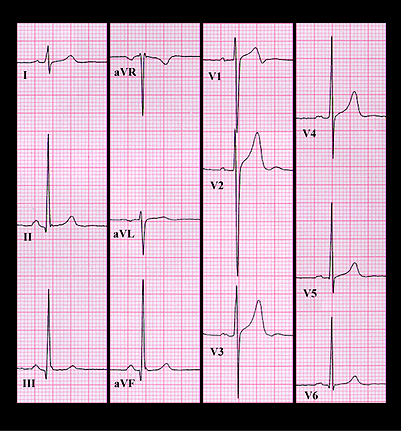
His ECG is shown again here. It reveals sinus rhythm with a normal PR interval and a normal QRS duration. The deep S wave in lead V2 and the sum of the S wave voltage in V 2 and the R wave voltage in lead V5 or V6, although still within normal limits for a male of this age, suggest possible left ventricular hypertrophy. The ECG is compatible with a small ventricular septal defect, mild pulmonic stenosis or mild to moderately severe aortic stenosis but the characteristics of the murmur, in combination with the ECG, are most suggestive of congenital aortic stenosis due to a bicuspid aortic valve. This diagnosis was confirmed by echocardiography. The estimated systolic pressure gradient across the aortic valve was 40 mm Hg, indicating moderately severe aortic stenosis.
